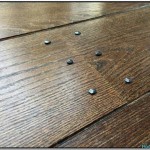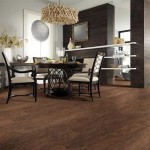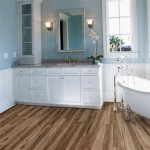Here's an article on Tate Raised Access Flooring, structured as requested:
Tate Raised Access Flooring: A Comprehensive Overview
Tate raised access flooring represents a sophisticated flooring solution designed to create an elevated structural floor above a solid substrate. This type of flooring system is commonly employed in commercial buildings, data centers, server rooms, and other environments where efficient cable management, HVAC distribution, and flexibility in layout modifications are paramount. Understanding the components, benefits, and applications of Tate raised access flooring is crucial for architects, engineers, and facility managers seeking optimal infrastructure solutions.
The primary function of a raised access floor is to create a void space, or plenum, beneath the walking surface. This plenum serves as a conduit for routing electrical wiring, data cables, and HVAC ductwork, effectively concealing these essential infrastructure elements from view. The result is a clean, organized, and easily accessible underfloor system that simplifies maintenance, upgrades, and future modifications. The system's modular design allows for quick and easy access to the underfloor services, minimizing disruption to ongoing operations during maintenance or reconfiguration.
Key Component: Floor Panels
The visible surface of a Tate raised access floor is composed of modular panels, typically square in shape. These panels come in various sizes, most commonly 2' x 2' (600mm x 600mm) or 2' x 4' (600mm x 1200mm). The construction of these panels is critical to the overall performance and durability of the flooring system. Common materials used include steel, calcium sulfate, and wood core with various top surface finishes.
Steel panels generally consist of a welded steel shell filled with a cementitious core for added strength and stability. These panels offer excellent load-bearing capacity and are suitable for high-traffic areas and environments with heavy equipment. Calcium sulfate panels are made from a dense, homogeneous material that provides excellent acoustic properties and dimensional stability. Wood core panels offer a more lightweight option and are often used in office environments where load requirements are less demanding. All panel types are designed to withstand the static and dynamic loads expected in their intended application.
The top surface of the panels can be finished with a variety of materials, including high-pressure laminate (HPL), vinyl, carpet tiles, and direct glue-down carpeting. The choice of finish depends on the aesthetic requirements of the space, the expected level of foot traffic, and any specific performance characteristics, such as static dissipation for sensitive electronic equipment. The panels are designed to be easily removable and replaceable, allowing for quick access to the underfloor services without the need for specialized tools or extensive labor.
Key Component: Understructure
The understructure of a Tate raised access floor provides the support and elevation for the panels. It consists of vertical pedestals, or stanchions, and horizontal stringers that connect the pedestals to create a grid-like framework. The pedestals are typically adjustable in height, allowing for precise leveling of the floor surface and accommodating variations in the subfloor. The pedestals are securely bonded to the subfloor by means of adhesive, mechanical fasteners, or a combination of both, depending on the load requirements and the characteristics of the subfloor material.
The pedestals are typically made of steel and are designed to distribute the weight of the panels and the live load across the subfloor. They are available in a range of heights to create the desired plenum depth. The height of the plenum is determined by the space requirements for the underfloor services, such as the size and number of cables, ducts, and other infrastructure elements. Taller pedestals may require additional bracing to ensure stability and prevent lateral movement. The stringers, also typically made of steel, connect the pedestals and provide lateral stability to the understructure. They are designed to resist racking and torsion forces, ensuring that the floor remains level and stable under load.
The spacing of the pedestals and stringers is determined by the load requirements of the floor. Higher load requirements necessitate closer spacing to provide adequate support. The understructure is designed to meet or exceed industry standards for static load, rolling load, and impact load. The understructure components are typically galvanized or powder-coated to protect against corrosion and ensure long-term durability.
Benefits and Applications of Tate Raised Access Flooring
Tate raised access flooring offers a range of benefits that make it a suitable choice for various commercial and industrial applications. One of the primary advantages is the flexibility it provides for managing cables and HVAC systems. The underfloor plenum allows for easy routing and rearrangement of these services, adapting to changing needs and reducing the cost of future modifications. This is particularly important in data centers and server rooms, where the infrastructure is constantly evolving.
Another key benefit is improved thermal management. In data centers, the raised floor plenum can be used to deliver cool air directly to the equipment racks, effectively dissipating heat and reducing energy consumption. This underfloor air distribution (UFAD) system can be more efficient than traditional overhead air conditioning systems because it delivers cool air directly to the source of heat generation. It also allows for more precise temperature control, improving the reliability and performance of the equipment.
The aesthetic appeal of Tate raised access flooring is another significant advantage. By concealing cables and ductwork beneath the floor, the system creates a clean and uncluttered environment. The variety of panel finishes available allows designers to create a visually appealing space that complements the overall architecture of the building. The ability to easily integrate power and data outlets into the floor panels further enhances the aesthetic appeal and functionality of the space.
Tate raised access flooring is also beneficial in terms of life cycle cost. While the initial investment may be higher than traditional flooring systems, the long-term benefits, such as reduced maintenance costs, increased flexibility, and improved energy efficiency, can result in significant savings over the life of the building. The modular design of the system allows for easy replacement of damaged panels, minimizing downtime and repair costs. The ability to easily reconfigure the floor layout also reduces the cost of future modifications, making it a cost-effective solution in the long run.
Applications for Tate raised access flooring are diverse. As previously stated, it is commonly used in data centers and server rooms to manage cables and HVAC systems. It is also used in office buildings, particularly those with open floor plans, to provide flexibility in workstation layouts and power/data access. In laboratories and clean rooms, the raised floor system can be used to manage utilities and maintain a controlled environment. In educational facilities, it can provide flexibility in classroom layouts and simplify the installation and maintenance of technology equipment. In retail spaces, it can be used to conceal wiring and create a clean, uncluttered environment.
Overall, Tate raised access flooring provides a comprehensive solution for managing infrastructure, improving thermal management, and enhancing the aesthetic appeal of commercial and industrial spaces. Its modular design, flexibility, and long-term cost savings make it a valuable investment for organizations seeking to optimize their facilities and adapt to changing needs. Selecting the correct panel type, understructure, and surface finish is essential to ensuring that the system meets the specific requirements of the application.

Access Floors

Commercial Tate Access Flooring H J Martin And Son

Raised Access Floor Red Thread

Porcelain Stoneware Raised Access Floor Tate Floors Fire Rated Indoor

Marble Raised Access Floor Terrazzo Tate Floors Acoustic Indoor

Tate Access Floors Longden

Tate Access Floors Sustainable Floor Solutions

Tate Calgary Central Library Interior Raised Access Flooring Inc

Tate Raised Access Floor System

Vinyl
Related Posts








